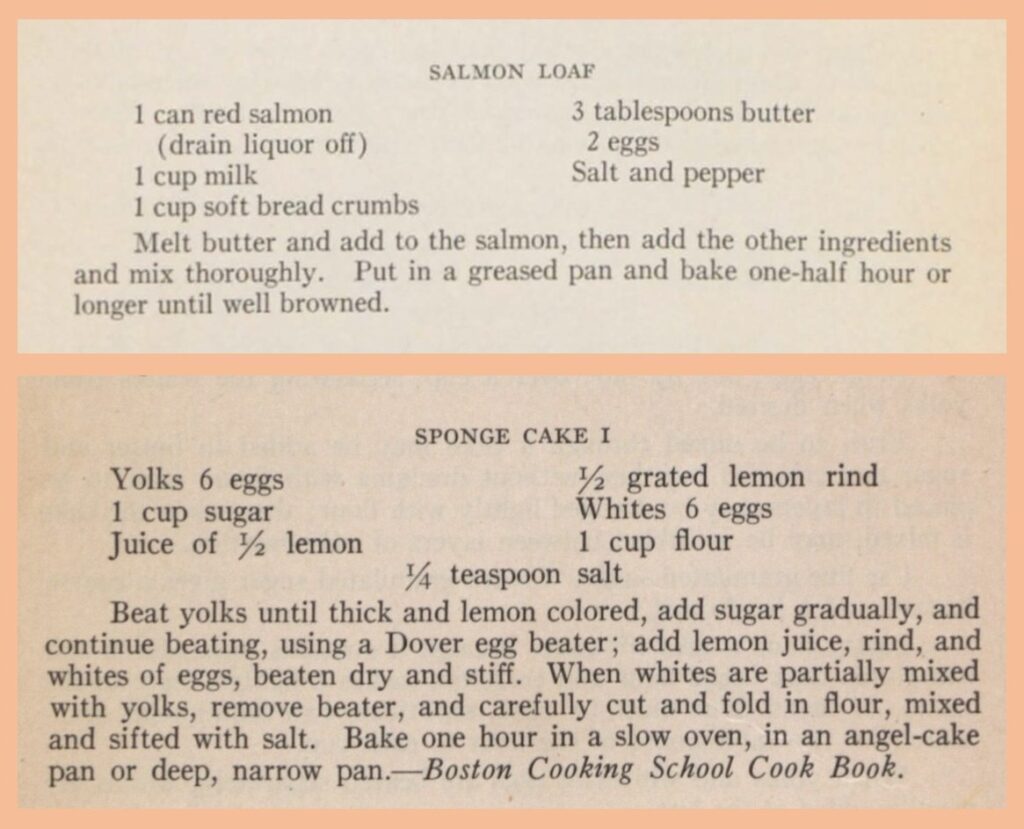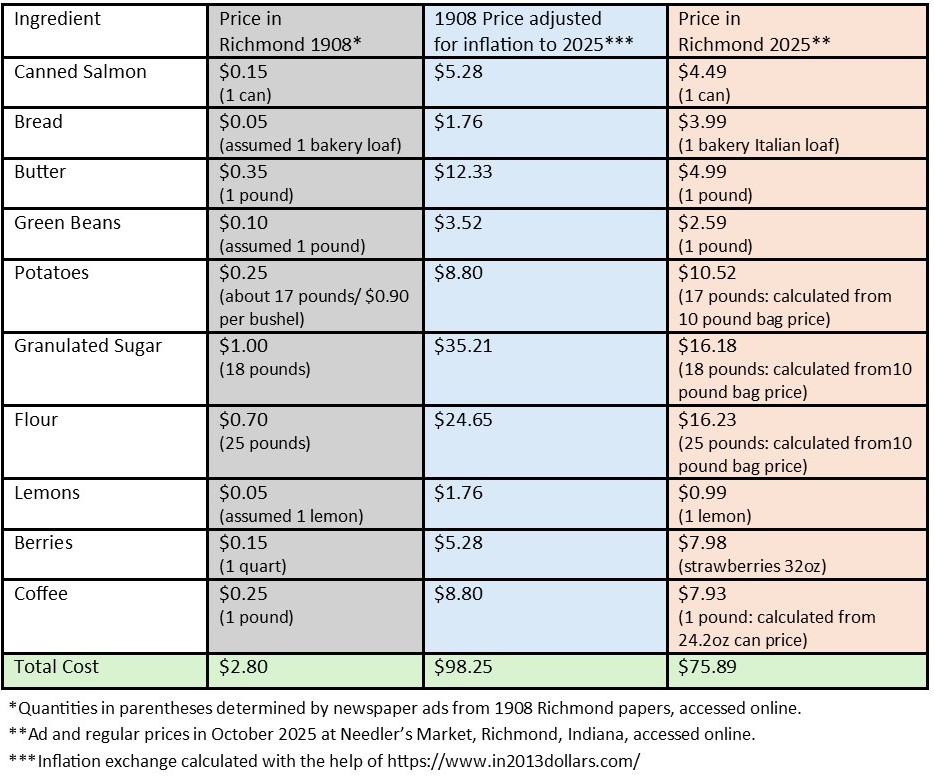
Purchase Tickets
Cost of a Meal—1908 to 2025
October 9, 2025

I always find it fascinating to compare the prices of goods over time. I am often drawn to receipts and advertisements in our collection that indicate a price for products. I recently photocopied some receipts from grocers in Richmond, Indiana, around 1908. The variety of goods purchased allowed me to look at our cookbooks and find recipes that fit with those ingredients, minus a couple of household staples that would have likely been found in the home regularly: salt and pepper, eggs, and milk.

Salmon Loaf and Sponge Cake I recipes, Domestic Science Cook Book, South Bend Public Schools, 1929. IHS.
I found a recipe for a lovely salmon loaf, which I decided to serve with green beans and roasted potatoes. A nice dessert course of sponge cake with berries and coffee was also planned as part of the meal. At the head of this post, Mrs. Hubert Sayler shows off her winning angel food cake from the 1947 Indiana State Fair. Angel food is a type of sponge cake. I make no guarantees on the award-worthiness of the included recipes above.
The 1908 receipts did not all state the quantity purchased, so I did my best to be true to cost comparisons as able. We need to consider that in some instances, you must buy larger quantities of ingredients to get the amount needed for a recipe. I’ve included the quantities below based on various factors.

While we often think of today’s prices being significantly higher than those of the past, it appears we are not always correct. I am sure if you were making other recipes, there would be times when the inflated cost of goods from a bygone era would be less than those of today. However, as calculated in the table above, that was not always the case. It’s also important to note that some of the quantities above would last many households today for quite a while, especially when factoring in 18 pounds of sugar and 25 pounds of flour. Unless you are a routine or excessive holiday baker, I would wager that many people don’t go through that amount in a year now.









